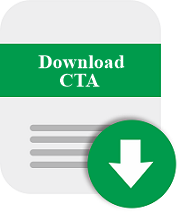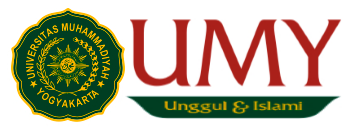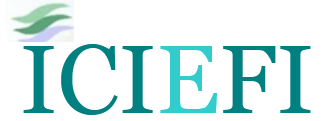Predictors of Islamic Financial Inclusion in the Northwest Nigeria: A Preliminary Cross-Sectional Investigation
Abstract
Keywords
Full Text:
PDFReferences
Abdu, M., Jibir, A., Abdullahi, S. and Rabi'u, A. A. (2018). Can Islamic banking and finance spur financial inclusion? Evidence from sub-Saharan Africa, CBN Journal of Applied Statistics, The Central Bank of Nigeria, Abuja, 9(1), pp. 77-104.
Abduh, M., and Omar, M. A. (2012). Islamic banking and economic growth: the Indonesian experience. International Journal of Islamic and Middle Eastern Finance and Management, 5(1), 35-47.
Abdullahi, A., Othman, A. H. A., and Kassim, S (2020). Enhancing financial inclusion in Nigeria: The role of Islamic finance, International Research in Technology, Engineering, Science and Humanities (IJRTESH), 1(1), pp. 1-10.
Abdullahi, A., Othman, A. H. A. and Kassim, S. (2021). Financial inclusion enhancement through the adoption of Islamic microfinance in Nigeria, International Journal of Ethics and Systems, 37(3), pp. 486-505. https://doi.org/10.1108/IJOES-02-2021-0040
Abel, B. B. (2020). Financial inclusion in Burundi: The use of microfinance services in semi-urban areas, Journal of Economic Development, 45(3), pp. 101-116.
Abel, S., Mutandwa, L., and Le Roux, P. (2018). A review ofdeterminants of financial inclusion,International Journal of Economics and Financial Issues, 8(3), pp. 1-8.
Adegbite, O. O., and Machethe, C. L. (2020). Bridging the financial inclusion gender gap in smallholder agriculture in Nigeria: An untapped potential for sustainable development. World Development, 127, Issue C. DOI: 10.1016/j.worlddev.2019.104755
Adeola, O., and Evans, O. (2017). Financial inclusion, financial development, and economic diversification in Nigeria. The Journal of Developing Areas, 51(3), pp. 1-15.
Adewale, A. A. (2014). Financial exclusion and livelihood assets acquisition among Muslim households in Ilorin, Nigeria: A structural invariance analysis, International Journal of Economics, Management and Accounting 22(2), pp. 69-94.
Aduda, J. and Kalunda, E. (2012), “Financial inclusion and financial sector stability with reference to Kenya: a review of literature”, Journal of Applied Finance and Banking, Vol. 2 No. 6, pp. 95-120.
Ahamed, M. M. and Mallick, S. K. (2019). Is financial inclusion good for bank stability? International evidence, Journal of Economic Behavior and Organization, 157, pp. 403-427.
Ahmed, H. and Salleh, A. (2016), “Inclusive Islamic financial planning: a conceptual framework”, International Journal of Islamic and Middle Eastern Finance and Management, 9(2), pp. 170-189.
Akhter, W., Majeed, M. U. and Roubaud, D. (2019).Islamic Banking and Financial Inclusion: Evidence from Asian and African Markets, Journal of Islamic Business and Management, 9(2), 341-354 https://doi.org/10.26501/jibm/2019.0902-007
Akileng, G., Lawino, G.M. and Nzibonera, E. (2018), “Evaluation of determinants of financial inclusion in Uganda”, Journal of Applied Finance and Banking, Vol. 8 No. 4, pp. 47-66.
Akudugu, M. A. (2013). The determinants of financial inclusion in Western Africa: Insights from Ghana, Research Journal of Finance and Accounting, 4(8), pp. 1-10
Amidzic, G., Massara, M.A. & Mialou, A. (2014), “Assessing countries’ financial inclusion standing-A new composite index (No. 14-36)”, International Monetary Fund, available at: https://www.elibrary. imf.org/view/IMF001/21190-9781475569681/21190-9781475569681/21190-9781475569681_A001. xml?redirect5true
Ali, M. M., Devi, A., Furqani, H. and Hamzah, H. (2020). Islamic financial inclusion determinants in Indonesia: An ANP approach, International Journal of Islamicand Middle Eastern Finance andManagement, DOI 10.1108/IMEFM-01-2019-0007
Aliyu, S. U. R. (2013). Islamic banking and finance in Nigeria: issues, challenges and opportunities, in Essentials of Islamic Banking and Finance in Nigeria (eds.) Dandago, K. I., Muhammad, A. D. & Oseni, U. A. (2013), Benchmark Publishers, pp. 34-45.
Alonso, S. L. N., Vazquez, J. J., Forradellas, R. F. R., and Dochado, E. A. (2022). Solutions to financial exclusion in rural and depopulated areas: Evidence based in Castilla León, Spain, Land, 11(74), pp. 1-19, https://doi.org/10.3390/land11010074
Alter, A., X.F. Alan and V. Nico, 2018. Understanding the macro-financial effects of household debt: A global perspective. IMF Working Papers, No. WP/18/76.
Babajide, A. A., Adegboye, F. B., and Omankhanlen, A. E. (2015). Financial inclusion and economic growth in Nigeria, International Journal of Economics and Financial Issues, 2015, 5(3), pp. 629-637.
Bagozzi, R. P., and Yi, Y. (2012). Specifications, Evaluation and Interpretation of Structural Equation Models, Journal of the Academy of Marketing Sciences, 40, pp. 8-34.
Brekke, T. (2018). Halal Money: Financial inclusion and demand for Islamic banking in Norway, Research and Politics, pp. 1–7, http://doi.org/10.1177/2053168018757624journals.sagepub.com/home/rap (Accessed on the 17th February, 2022).
Camara, N., & Tuesta, D. (2014). Measuring Financial Inclusion: A Multidimensional Index, 14/26 Working Paper,https://www.researchgate.net/publication/291356924
Central Bank of Nigeria. (2018). National Financial Inclusion Strategy (Revised) (pp. 1–79). pp. 1–79. Retrieved from https://www.cbn.gov.ng/
Central Bank of the Philippines (2019). cited in Harnessing innovation on financial inclusion: The Marawi experience, The Mindanao Policy Research Forum, Mindanao State University Gensan General Santos.
Chakravarty, S. & Rupayan P. (2010). “Measuring Financial Inclusion: An Axiomatic Approach,” Indira Gandhi Institute of Development Research, Working Paper No. WP 2010/003.
Cramer, J. S. (2006). Logit models from Economics and other fields, Cambridge University press.
Enhancing Financial Innovation & Access (EFInA) (2021). Access to Financial Services in Nigeria 2020 Survey.
Enhancing Financial Innovation & Access (EFInA) (2015). Access to Financial Services in Nigeria 2014 Survey.
Danlami, A.H., Aliyu, S.U.R., Shehu, F.M. (2024). Impact of non-interest financial inclusion on household livelihood in northwest Nigeria: A preliminary investigation. King Abdul’azizUniverity Journal of Islamic Economics, 37(1), 39–54.
Danlami, A.H.,Applanaidu, S. D., & Islam, R. (2017).From biomass cooking fuel sources to modern alternatives for Bauchi State households: A preliminary analysis. Biofuels 8(3), 323-331.
De Koker, L. and Jentzsch, N. (2013), “Financial inclusion and financial integrity: Aligned incentives?”, World Development, Vol. 44, pp. 267-280.
Dufhues, T., Buchenrieder, G., and Munkung, N. (2013). Social capital and market imperfections: Accessing formal credit in Thailand. Oxford Development Studies, pp. 1-22.
Gliem J. A. and Gliem R. R. (2003). Calculating, Interpreting and Reporting Cronbach’s Alpha Reliability Coefficient for Likert-Type Scales. A paper presented at Midwest Research Conference, The Ohio state university, Columbus.
Greene, W. H. (2003). Econometric analysis 5th Edition. New Jersey: Prentice Hall.
Gujarati, D.N., 2009, Basic econometrics, Tata McGraw-Hill Education, New Delhi.
Hair, J. F., Sarstedt, M., Ringle, C. M., and Mena, J. A. (2012). An assessment of the use of partial least squares structural equation modeling in marketing research. Journal of Academy of Marketing Sciences, 40, pp. 414-433.
Herispon, H. (2019). The effect of bank behavior, financial literacy on financial inclusion and debt behavior in household consumption. International Conference on Social Sciences, Humanities, Economics and Law, Padang, Indonesia.
Hill, L., and Kau, P. (1973). Application of multivariate probit to a threshold model of grain dryer purchasing decisions. American Journal of Agricultural Economics, 55, pp. 19-27.
Hussaini, U. Chibuzo, I. C. (2018). The effects of financial inclusion on poverty reduction: The moderating effects of microfinance, International Journal of Multidisciplinary Research and Development, 5(12), pp. 188-198
Ibrahim, S. S., Ozdeser, H., and Cavusoglu, B. (2019). Financial inclusion as a pathway to welfare enhancement and income equality: Micro-level evidence from Nigeria. Development Southern Africa, 36(3), pp. 390-407.
Idrisa Y. L., Ogunbameru, B. O., and Amaza, P. S. (2010). Influence of farmers’ socio-economic and technology characteristics on soybean seeds technology adoption in Southern Borno State, Nigeria. African Journal of Agricultural Research, 5(12), pp. 1394-1398.
IMF (2019). Financial Inclusion of Small and Medium Sized-Enterprises in the Middle East and Central Asia. IMF Middle East and Central Asia Department.
Ismail A., Yahya, M. G., Olakunle, D. H., Sani, H. and Aliyu, S. U. R. (2021). Attaining inclusive growth through the instrument of Waqf, Bayero Journal of Economics and Development, vol. 2, pp. 126-148.
Iqbal, Z., and Mirakhor, A. (Eds.). (2013). Economic development and Islamic finance. The World Bank.
Joshi, V.K., Singh, M.R. and Jain, S. (2014), “Financial inclusion for sustainable development through Pradhan mantri Jan-Dhan Yojana”, Professional Panorama: An International Journal of Applied Management and Technology, pp. 125-132, available at: http://www.professionalpanorama.in/ wp-content/uploads/2015/02/14sonal-ji.pdf.
Jouti, T. A. (2018). Islamic finance: Financial inclusion or migration? ISRA International Journal of Islamic Finance, 10(2), pp. 277-288. https://doi.org/10.1108/ijif-07-2018-0074
Kabiru, K., and Ibrahim, W. H. B. W. (2020). Can Islamic banking development spur financial inclusion in OIC member countries? Asian People Journal (APJ), 3(1), pp. 170-185
Khmous, D. F. and Besim, M. (2020). Impact of Islamic banking share on financial inclusion: evidence from MENA, International Journal of Islamic and Middle Eastern Finance and Management, 13 (4), pp. 655 -673. https://doi.org/10.1108/IMEFM-07-2019-0279
Kim, D. W., Yu, J. S. and Hassan, M. K. (2017). Financial Inclusion and Economic Growth in
OIC Countries. Research in International Business and Finance,
http://dx.doi.org/10.1016/j.ribaf.2017.07.178.
Kline, R. B. (2005). Principles and Practice of Structural Equation Modeling, New York: Guilford Press.
Leon, F., and Weill, L. (2017). Islamic banking development and access to credit. Pacific Basin Finance Journal, 52, pp. 54–69.
Maddala, G., Li, H. and Srivastava, V. (2001). A comparative study of different shrinkageestimators for panel data models, Annals of Economics and Finance, 2(1), pp. 1–30.
Masiyandima, N.,Mlambo, K.and Nyarota, S. (2017). Financial inclusion and quality of livelihood in Zimbabwe, 14th African Finance Journal Conference-Africa growth Institute, 2017.
Mensi, W., Hammoudeh, S., Tiwari, A. K., and Al-Yahyaee, K. H. (2020). Impact of Islamic banking development and major macroeconomic variables on economic growth for Islamic countries: Evidence from panel smooth transition models, Economic Systems, 44(1), 1-14.
Mhlanga, D., Dunga, S.H. and Moloi, T., (2021). Understanding the drivers of financial inclusion in South Africa, Journal of Economic and Financial Sciences, 14(1), a594. https://doi. org/10.4102/jef.v14i1.594
Mustafa, D., Baita, A. J. and Usman, A. Y. (2018). Impact analysis of Islamic finance on financial inclusion and economic growth in selected Muslim countries: Lesson for Nigeria. International Journal of Economics, Management and Accounting, 26(2), pp. 393 – 414.
Mohieldin, M., Iqbal, Z., Rostom, A., and Fu, X. (2011). The role of Islamic finance in enhancing financial inclusion in Organization of Islamic Cooperation (OIC) Countries, Policy Research Working Paper (WPS5920), The World Bank Islamic Economics and Finance Working Group.
NFIS, (2018). The National Financial Inclusion Strategy (Revised), Central Bank of Nigeria.
Nguyen. T.T.H. (2020). Measuring financial inclusion: a composite FI index for the developing, Journal of Economics and Development, DOI 10.1108/JED-03-2020-0027
OJK (2017). Survei Nasional Literasi dan Inklusi Keuangan 2017’. Otoritas Jasa Keuangan. Available at: http://www.ojk.go.id/id/berita-dan-kegiatan/siaranpers/Documents/ Pages/Siaran-Pers-OJK-Indeks-Literasi-dan-Inklusi-Keuangan-Meningkat/ buku% 20statistik_172911.pdf.
Okello, G. C. B., Ntayi, J. M., Munene, J. C. and Malinga, C. A. (2017). The relationship between access to finance and growth of SMEs in Developing Economies: Financial literacy as a moderator. Review of International Business and Strategy. Emerald Publishing Limited.
Omojolaibi, J. A. (2017). Financial inclusion, governance and economic progress in Nigeria: What happens to the welfare of the poor? Arabian Journal of Business and Management Review (Oman Chapter), 6(7), pp. 72-85.
Oyelami, L. O., Saibu, O. M., and Adekunle, B. S. (2017). Determinants of financial inclusion in sub-Sahara African countries, Covenant Journal of Business and Social Sciences (CJBSS), 8(2), pp. 104-116.
Ozili, P. K. (2020). Financial inclusion in Nigeria: Determinants, challenges and achievements, Challenges and Achievements.
Ozili, P. K. (2022). Financial inclusion in Nigeria: An overview, International Journal of Banking and Finance, 17(2), 1-24. https://doi. org/10.32890/ ijbf2022.17.2.1
Park, C. Y., and Mercado, R. (2015). Financial inclusion, poverty, and income inequality in developing Asia. Asian Development Bank Economics Working Paper Series, (426).
Park, Cyn-Young & Mercado, Jr, Rogelio. (2018). Financial Inclusion: New Measurement and Cross-Country Impact Assessment. SSRN Electronic Journal. 10.2139/ssrn.3188476.
Pindyck, S. R., and Rubinfeld, L. D. (1998). Econometric Models and Economic Forecasts 4th Edition. New York: McGraw-Hill.
Poonam, Archna Chaudhry (2019). Analysis of key determinants affecting financial inclusion, Indian Journal of Economics and Development, 7(4), pp.1-3.
Riwayati, H.E. (2017). Financial inclusion of business player in mediating the success of small and medium enterprises in Indonesia. International Journal of Economic and Financial Issues, 7 (4), pp. 623 – 627.
Rangarajan Committee, 2008, “Report of the Committee on Financial Inclusion”, Committee Report.
Rao, C.R. (1973). Linear statistical inference and its applications, Wiley, New York, NY.
Razak, A. A., Muhammad, F., Hussin, M. Y. M., Mahjom, N., Hadi, F. S. A., and Zainol, Z. (2019). Modeling financial inclusion in the ar-rahn’s financing as imperatives for economic well-being in Malaysia. International Journal of Academic Research in Business and Social Sciences, 9(1), pp. 1203-1223.
Sanistasya, P.A., Rahardjo, K. and Iqbal, M. (2019). The effect of financial literacy and financial inclusion on small enterprises performance in East Kalimantan. Journal Economia, 15(1), pp. 48 – 59.
Santos J. R. (1999). Cronbach’s Alpha: A tool for assessing the reliability of scales. Journal of Extension, 37, (2), 1–5.
Sarma, M. (2008), Index of Financial Inclusion, Indian Council for Research on International Economic Relations, Working Paper No. 215.
Sarma Mandira, (2010). “Index of Financial Inclusion.” CITD Discussion Paper 10-05.
Sarma, Mandira, (2012). “Index of Financial Inclusion – A measure of financial sector inclusiveness,” Berlin Working Papers on Money, Finance, Trade and Development, Working Paper No. 07/2012.
Sethy, S. K. (2016). Developing a Financial Inclusion Index and Inclusive Growth in India. Theoretical and Applied Economics, 23(2), pp. 187–206,
https://doi.org/10.1177/0019466220150210
Shah, S. K. (2020). Binary logistic model to identify the factorsassociated with households with bank accounts in Nepal, Quest Journal of Management and Social Sciences, 2(2), pp.323-336Web: https://www.quest.edu.np
Shaikh, S. A., Ismail, M. A., Shafiai, M. H. M., Ismail, A. G., and Shahimi, S. (2017). Role of Islamic banking in financial inclusion: Prospects and performance cited in N. Alam, S.A.R. Rizvi (eds.) (2017). Islamic Banking, Palgrave CIBFR Studies in Islamic Finance, DOI: https://doi.org/10.1007/978-3-319-45910-3_3 (Accessed on 17 February, 2022)
Sharma, D. (2016). Nexus Between Financial inclusion and economic growth: Evidence from emerging Indian economy. Journal of Financial Economic Policy, 8(1), pp. 13 – 36. Emerald Group Publishing Limited.
Shinkafi, A. A., Yahaya, S. and Sani, T. A. (2019), Realizing financial inclusion in Islamic finance,Journal of Islamic Marketing, 11(1), pp. 143-160. https://doi.org/10.1108/JIMA-02-2017-0020
Sikarwar, T. Goyal, A., and Mathur, H. (2020). Household debt, financial inclusion, and economic growth of India: Is it alarming for India? Asian Economic and Financial Review, 10(2), pp. 229-248, DOI: https://doi.org/10.18488/journal.aefr.2020.102.229.248 (Accessed on the 17th March, 2022)
Trianto, B., Barus, E. E., and Sabiu, T. T. (2021). Relationship between Islamic financial literacy, Islamic financial inclusion and business performance: Evidence from Culinary cluster of creative economy, IKONOMIKA: Jurnal Ekonomi dan Bisnis Islam, Volume 6(1), pp. 19-38.
Yahaya, S., Shinkafi, A. A., and Haji-Othman, Y. (2020). Islamic banking: A panacea for financial inclusion in Northern Nigeria, International Conference on Contemporary Issues in Islamic Finance, pp. 8-22.
Yussuf, A. (2017). Effect of Islamic banking on growth of small medium enterprises in Nairobi: A case study of Forst Community Bank. Master Thesis of the United States International University, Africa.
Widarwati, E., Sari, P., and Nurmalasari, N. (2019). Role of financial inclusion to stability: The case of Indonesia’s Sharia banking. HOLISTICA–Journal of Business and Public Administration, 10(1), pp. 7-15.
World Bank (2014). Global Financial Development Report 2014: Financial Inclusion, Washington, DC: World Bank. Doi:10.1596/978-0-8213-9985-9. License: Creative Commons Attribution CC BY 3.0
World Bank (2017). Global Findex Database, Global Findex. Available online: https://globalfindex.worldbank.org/ (Accessed on 14 February, 2022).
World Bank (2018), “Understanding/ poverty/ topics/ financial inclusion”, available at: https://www. worldbank.org/en/topic/financialinclusion/overview.
World Bank (2021). Financial Inclusion, Available online: https://www.worldbank.org/en/topic/financialinclusion/overview#1(Accessed on 26 January, 2022).
Zamer, K. Z. (2018).Islamic Banking: A new approach for financial inclusionInternational Journal of Economics and Finance, 10(7), 118-124. https://doi.org/10.5539/ijef.v10n7p118 (Accessed 23 February, 2022).
DOI: https://doi.org/10.18196/ijief.v7i2.21386
Refbacks
- There are currently no refbacks.
Copyright (c) 2024 International Journal of Islamic Economics and Finance (IJIEF)

This work is licensed under a Creative Commons Attribution-ShareAlike 4.0 International License.
International Journal of Islamic Economics and Finance (IJIEF)
International Program for Islamic Economics and Finance
Department of Economics
Faculty of Economics and Business
Universitas Muhammadiyah Yogyakarta
Pascasarjana Building, Ground Floor
Jl. Brawijaya (Ringroad Selatan), Kasihan, Bantul
D.I. Yogyakarta 55183, INDONESIA
Official email: ijief@umy.ac.id












1.jpg)